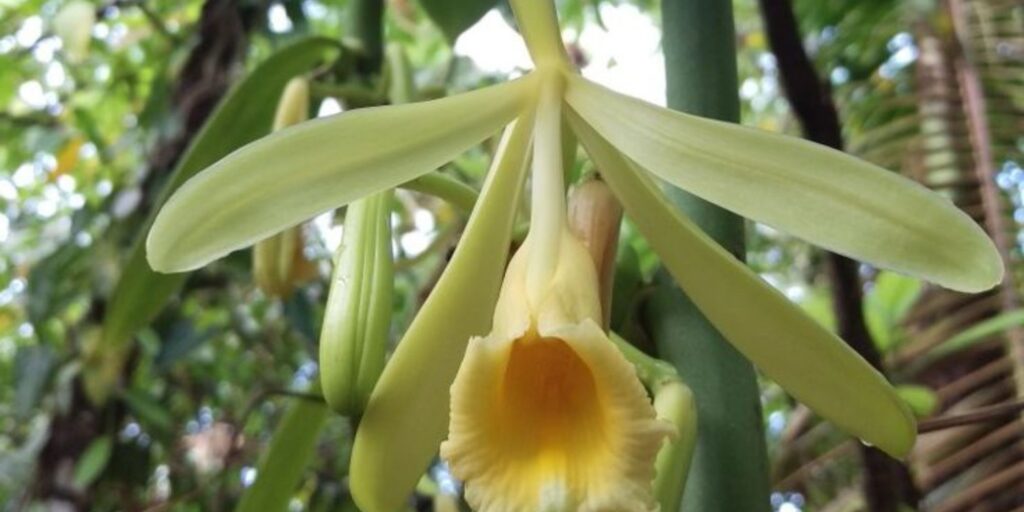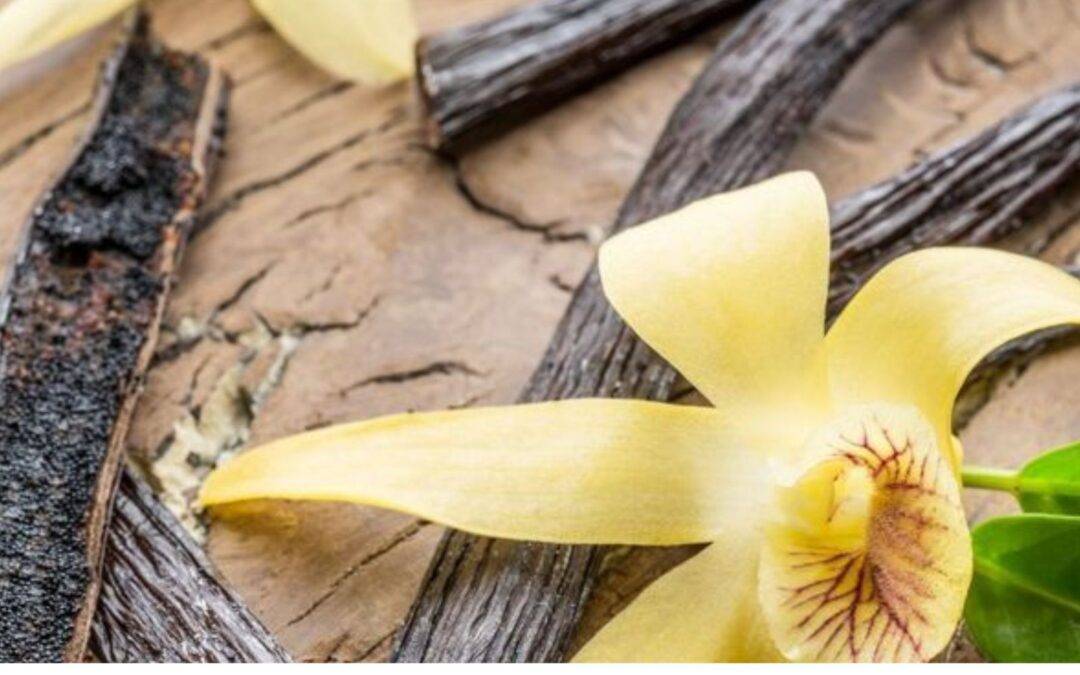Introduction
Vanilla plant, one of the most beloved flavours in the world, comes from the vanilla plant. While most people use vanilla extract or powder, the vanilla plant itself offers unique culinary opportunities. In this comprehensive guide, we will explore how to eat the vanilla plant, from its beans to its flowers, and how to incorporate it into your meals. Now, let’s dive in!
First, we’ll start by understanding the vanilla plant and its structure. Next, we’ll discuss why eating the vanilla plant is beneficial. Then, we’ll explore how to use vanilla plant beans, flowers, and leaves in your cooking. After that, we’ll share creative recipes to inspire you. Additionally, we’ll provide tips for buying and storing the vanilla plant. Finally, we’ll highlight the health benefits and global culinary uses of the vanilla plant. By the end, you’ll have a complete guide to enjoying the vanilla plant in all its forms. Let’s begin!
Understanding the Vanilla Plant
Before we discuss how to eat the vanilla plant, it’s essential to understand its structure. First, the vanilla plant produces long, green pods, commonly called vanilla beans. These beans contain tiny seeds and a fragrant pulp. Additionally, the plant blooms with delicate flowers, which are edible but less commonly used.
Next, let’s discuss how vanilla beans develop their signature flavor. Farmers harvest the beans, ferment them, and dry them over several months. This process transforms the raw beans into the aromatic vanilla we know and love. Now that we’ve covered the basics let’s move on to how you can enjoy the vanilla plant in your meals.
Why Eat the Vanilla Plant?
Eating the vanilla plant offers more than just a unique flavour. In addition, vanilla contains antioxidants, which help combat free radicals in the body. Furthermore, it has calming properties, making it a popular ingredient in aromatherapy and desserts. As a result, by consuming the plant directly, you can enjoy its natural benefits without additives or preservatives.
How to Eat Vanilla Beans

Vanilla beans are the most commonly used part of the plant. Here’s how you can incorporate them into your diet:
1. Scraping the Seeds
The seeds inside the vanilla bean are packed with flavour. To begin with, slice the bean lengthwise with a sharp knife. Then, use the back of the knife to scrape out the tiny black seeds. Afterwards, you can add these seeds to desserts like ice cream, custard, or cake batter for a rich, aromatic flavour.
2. Using the Whole Bean
You can also use the whole vanilla bean to infuse flavor into liquids. Add the bean to milk, cream, or syrup while heating. The heat will release the bean’s oils, imparting a deep vanilla flavour. Remember to remove the bean before serving.
3. Making Vanilla Sugar
Place a used vanilla bean in a jar of sugar. As time passes, the sugar will absorb the vanilla’s aroma, thereby creating vanilla sugar. You can then use this sugar in baking or to sweeten beverages.
How to Eat Vanilla Flowers
Vanilla flowers are less common in culinary use but are entirely edible. They have a subtle, sweet flavour that pairs well with salads, desserts, and drinks. Here’s how to use them:
1. Garnishing Dishes
Use vanilla flowers as a garnish for cakes, pastries, or cocktails. Their delicate appearance adds a touch of elegance to any dish.
2. Infusing Beverages
Add vanilla flowers to tea, lemonade, or sparkling water for a floral twist. The flowers will release their flavor as they steep.
3. Incorporating into Salads
Toss vanilla flowers into a fresh salad for a unique flavour. They also pair well with fruits like strawberries, peaches, and citrus.
How to Use Vanilla Leaves
While vanilla leaves are not as commonly used as beans or flowers, they can still add flavour to your dishes. Here’s how:
1. Wrapping Foods
Use vanilla leaves to wrap fish, chicken, or rice before cooking. The leaves will impart a subtle vanilla aroma to the dish.
2. Brewing Tea
Steep vanilla leaves in hot water to make a fragrant tea. Add honey or lemon for extra flavour.
Creative Recipes Using the Vanilla Plant
Now that you know how to eat the vanilla plant, let’s explore some creative recipes:
1. Vanilla Bean Ice Cream
Combine heavy cream, milk, sugar, and scraped vanilla bean seeds. Then, churn the mixture in an ice cream maker for a delicious homemade treat.
2. Vanilla Flower Salad
Mix vanilla flowers with arugula, goat cheese, and a honey vinaigrette. Top with toasted almonds for added crunch.
3. Vanilla-Infused Cocktails
Muddle vanilla flowers with fresh berries and mint. Add vodka or gin and shake with ice for a refreshing drink.
Tips for Buying and Storing Vanilla
To enjoy the vanilla plant at its best, follow these tips:
- Buy Whole Beans: Look for plump, moist vanilla beans with a strong aroma. Avoid dry or brittle beans.
- Store Properly: Keep vanilla beans in an airtight container in a cool, dark place. You can also store them in alcohol to preserve their flavor.
- Use Fresh Flowers: If using vanilla flowers, ensure they are fresh and free from pesticides.
Health Benefits of Eating Vanilla
Eating the vanilla plant offers several health benefits:
- Rich in Antioxidants: Vanilla helps protect your cells from damage.
- Calming Effects: Its aroma can reduce stress and anxiety.
- Digestive Aid: Vanilla may help soothe an upset stomach.
Exploring Vanilla in Global Cuisines
Vanilla is a versatile ingredient used in cuisines worldwide. Let’s explore how different cultures incorporate vanilla into their dishes:
1. Indian Cuisine
In Indian Cuisine, chefs use vanilla in milk-based desserts like kheer and ras malai. The floral notes of vanilla add depth to these sweet treats.
2. French Cuisine
In French Cuisine, vanilla beans are used in classic desserts like crème brûlée and panna cotta. The beans’ rich flavor enhances the creamy texture of these dishes.
3. Mexican Cuisine
In Mexico, vanilla is a key ingredient in flan and churros. The warm, sweet flavour, therefore, complements the spices used in traditional Mexican desserts.
Growing Your Own Vanilla Plant
If you’re passionate about vanilla, consider growing your own vanilla plant. Here’s how:
1. Choosing the Right Environment
Vanilla plants thrive in warm, humid climates. They need plenty of sunlight and well-draining soil.
2. Pollinating the Flowers
Vanilla flowers require hand pollination to produce beans. To begin with, a small stick or toothpick is used to transfer pollen from the male to the female part of the flower. This process ensures the production of vanilla beans.
3. Harvesting and Processing
Once the beans mature, harvest them and follow the traditional curing process to develop their flavour.
Common Mistakes to Avoid: How to eat Vanilla Plant
When using the vanilla plant, avoid these common mistakes:
- Overheating Vanilla: High heat can destroy vanilla’s delicate flavour. Therefore, add it to dishes at the end of cooking.
- Using Low-Quality Beans: Always choose high-quality vanilla beans for the best flavour. This ensures a richer and more aromatic taste.
- Ignoring Storage Guidelines: Improper storage can cause vanilla beans to lose their aroma and flavour. Consequently, it’s important to store them properly to maintain their quality.
Frequently Asked Questions: How to eat Vanilla Plant
1. Can You Eat Raw Vanilla Beans?
Yes, you can eat raw vanilla beans, but they have a milder flavour compared to cured beans.
2. Are Vanilla Flowers Safe to Eat?
Yes, vanilla flowers are safe to eat and add a subtle sweetness to dishes.
3. How Long Do Vanilla Beans Last?
Properly stored vanilla beans can last up to two years.
Conclusion: How to eat Vanilla Plant

The vanilla plant offers a world of culinary possibilities, from its aromatic beans to its delicate flowers. By exploring how to eat the vanilla plant, you unlock unique flavours and health benefits. Whether scraping seeds for desserts, infusing beverages with flowers, or wrapping foods in leaves, vanilla adds depth and elegance to dishes. Additionally, its antioxidants and calming properties make it a valuable addition to your diet. Growing your own vanilla plant can also be a rewarding.

